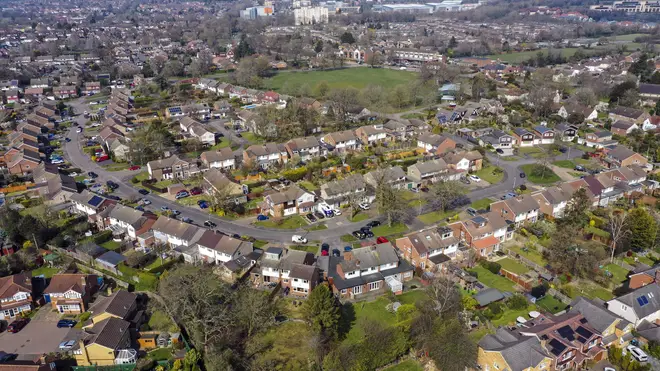
Ian Payne 4am - 7am
28 September 2020, 00:04

Hamptons International expects prices to stall next year, while Zoopla said the share of first-time buyers in the market is likely to fall.
House price growth will be brought to a standstill across Britain next year, as the share of first-time buyers in the market dwindles, according to forecasts.
Hamptons International made the predictions about house prices, while a separate report from Zoopla looked into the share of first-time buyers in the market.
Hamptons said the housing market has made a rapid recovery since the lockdown, and it expects prices to have increased by 2% across the whole of this year.
Wales (3.0%) followed by London (2.5%), Yorkshire and the Humber (2.5%) and the North West of England (2.5%) will see the strongest house price growth in 2020, it predicts.
The economic consequences of Covid-19 will be mostly felt in 2021, it said, adding that some economic recovery should have already taken place by then.
Assuming a trade deal is agreed with the EU and a coronavirus vaccine becomes available in the first half of next year, with no full second lockdown, Hamptons expects house prices across Britain to remain flat (0.0%) in 2021.
As the economy recovers, Hamptons expects house price growth to accelerate to 2.5% in 2022 and 3.5% in 2023 across Britain.
More affordable regions in northern England and Scotland could lead the house price growth, it said.
Hamptons expects prices in the North East of England to increase by 4.0% in 2022, followed by Scotland at 3.5%.
Southern regions, where affordability remains tight, will see the weakest price growth in 2022, it said.
Aneisha Beveridge, head of research at Hamptons International, said: “The real challenges won’t be felt until 2021.
“The economic consequences from the Covid-19-induced recession will pull the housing market from its long-term growth trajectory. While some economic recovery should have taken place to cushion the withdrawal of Government support, we still expect the housing market to slow next year.
“In line with a gradual economic recovery, we forecast house prices to rise again in 2022 and 2023. The housing market will fall back in line with its historical cycle, with northern regions expected to see the greatest price growth, further closing the gap with those in the South.”
Hamptons’ forecast was released as a separate report from Zoopla predicted that existing home owners with a mortgage are poised to overtake first-time buyers as the biggest demographic in terms of the share of sales.
It would be the first time since 2017 that home owners with a mortgage have outnumbered first-time buyers in the market.
Zoopla calculated that first-time buyers with a mortgage will make up about 33.9% of the market this year, while existing home owners with a mortgage will account for around 35%.
It expects the trend to continue into 2021, with first-time buyers making up 32.2% of sales and home owners with a mortgage accounting for 35.9%.
In 2019, first-time buyers with a mortgage accounted for 34.9% of sales while home owners with a mortgage made up 34%.
Richard Donnell, research and insight director at Zoopla, said existing home owners’ search for more space, prompted in many cases by the Covid-19 crisis, underpins the trend.
Many low deposit mortgages have disappeared from the market in recent months as lenders have become more wary about “riskier” lending.
Mr Donnell said: “A change in the mix of buyers is supporting market conditions with sustained demand from equity rich existing owners seeking more space and a change in location.
“In contrast, first-time buyer demand is weakening. First-time buyers have been a driving force of housing sales over the last decade.
“They remain a key buyer group but lower availability of higher loan-to-value mortgages and increased movement by existing home owners means a shift in the mix of home buyers into 2021.”
Here are house price growth forecasts for 2020, 2021, 2022 and 2023 according to Hamptons International:
– Greater London, 2.5%, minus 1.0%, 1.5% , 3.0%
– Prime central London, 1.0% minus 1.0%, 2.5% 4.0%
– South East, 1.5%, 0.5%, 1.0%, 2.0%
– East of England, 1.0%, 1.0%, 1.5%, 2.5%
– South West, 2.0%, minus 1.0%, 2.5%, 3.0%
– East Midlands, 1.5%, minus 0.5%, 2.0%, 2.5%
– West Midlands, 1.0%, minus 1.5%, 1.5%, 3.5%
– North East, 1.5%, 1.0%, 4.0%, 5.0%
– North West, 2.5%, 0.5%, 3.0%, 4.5%
– Yorkshire and the Humber, 2.5%, 1.0%, 3.0%, 4.0%
– Wales, 3.0%, 1.0%, 3.0%, 3.5%
– Scotland, 1.5%, 0.0%, 3.5%, 5.0%